Onewheel: Can it replace your car?

Back in August I ordered a Onewheel XR+ and I've taken it over 200 miles since then.
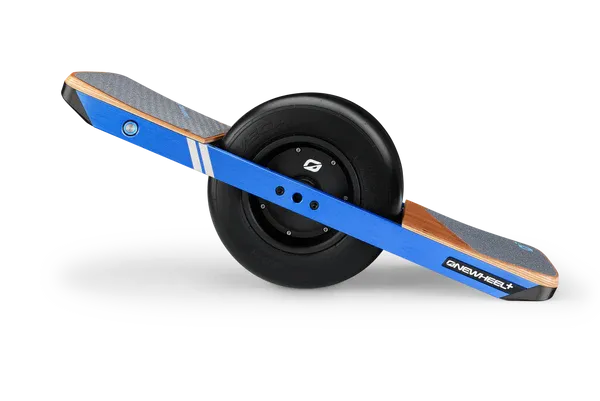
The idea was that I could sell my car, and use the Onewheel as my primary commuter vehicle. Viable? Absolutely.
Before making the significant $1800+ decision to buy it, I had done as much research as I could but I never found a full breakdown review of what it's like to ride the board day to day. That's what this is.
# Learning to Ride
I grew up in the country, so there were no big paved playgrounds to do skateboarding. The closest I had ever gotten to it was snowboarding, which does have a similar feel.
So I started out very new to riding a skateboard and it took a little bit of time to get comfortable on it. However, it's really easy to get started, it just takes a bit to master.
## Tips
- Wear a helmet, and as much padded gear you can find
- Find a soft place to start riding, but as flat as possible
- Figure out the dismount
- Practice your balance
- Don't go near any cars (if you choose an empty parking lot)
When you start trying to ride for the first time, you're going to come off the board. A flat grassy place would be good to start on. However, a running track, with its spongy material and large flat area would be best if you can get access to one. If (when) you fall on your butt, you want it to be as soft as possible.
The dismount is the hardest part about the ride. There are 3 ways to do it:
`1.` Jump. Legit, just try and pop both feet at the same time and bail.

`2.` Lean the board side-ways, so that you dip it into the ground. It'll turn off, but it might take off if you do it too quickly.
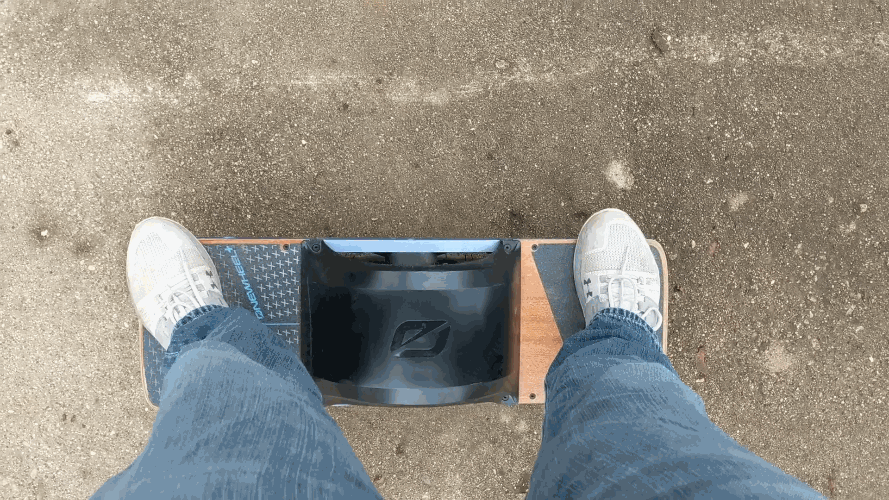
`3.` Lift your heel, this is the "cool" way to do it, but it's also the most difficult. It'll throw your balance off, which is already difficult when the board is at a stop. It also takes longer than you think it would for the board to disengage. It takes about a full second or two to turn off, which is a safety feature, in case you temporarily come off the sensors while you're riding.
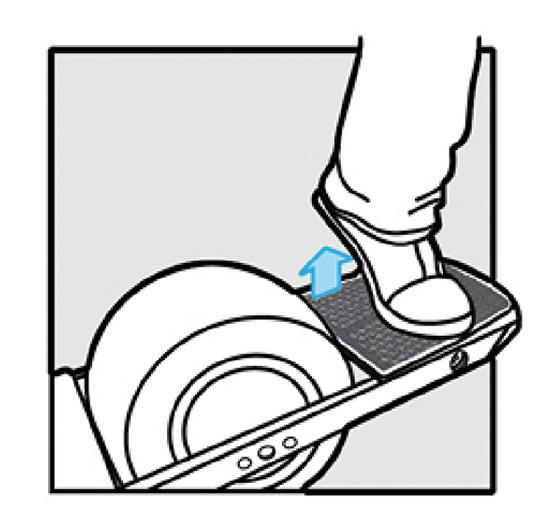
When practicing, don't go near any cars. The board takes a couple seconds to shut off, so if you come off the board poorly, it can go flying in any direction and potentially damage a vehicle.
Also, technically, there's another fun way to dismount, though it'll grind up your board. When going down the road, turn your forward foot straight, so that it ends up on only one pad (sensor). The board won't shut off until you're going less than 5 mph, so when it does, lean backwards, and when the board turns off it will hit the ground and grind on the pavement until you've come to a stop. It might look cool-ish, and is kind of fun, but it'll destroy the plastic piece under the board. It is replaceable and fairly cheap though.<br />
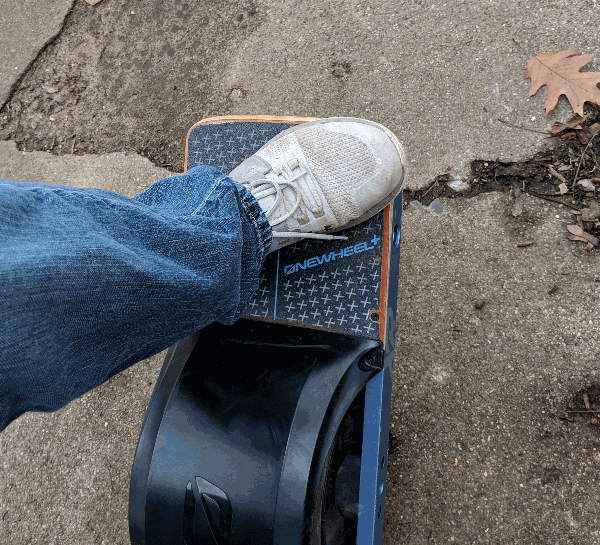
# Safety
Wear a helmet! Always.
I've taken a couple of spills so far, but so far only one really good spill onto the sidewalk.
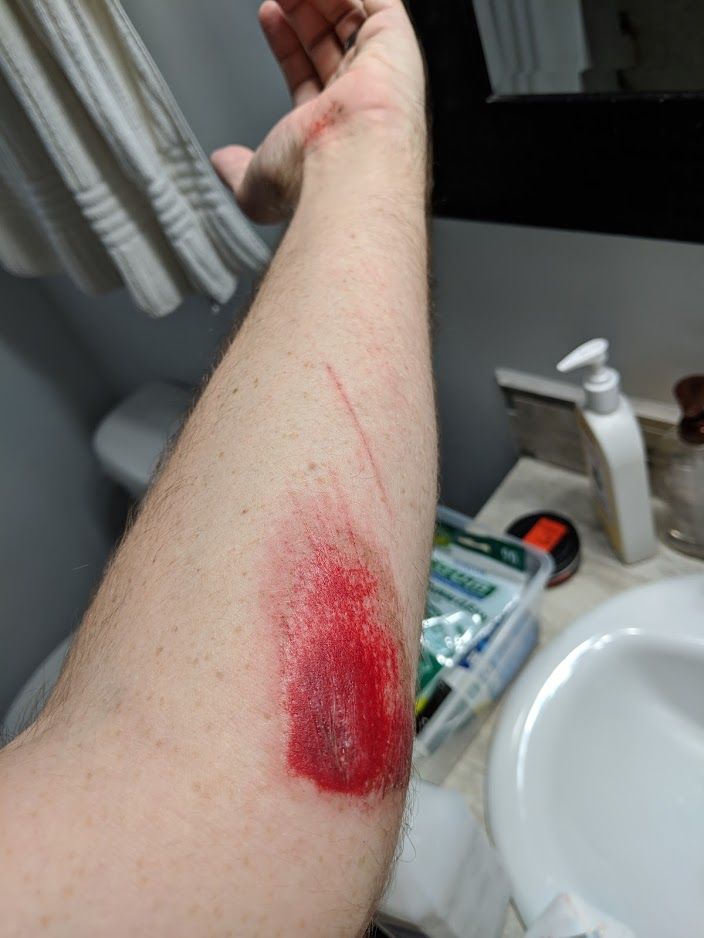
Be prepared to get hurt. It'll happen, it's the nature of the board but it's so worth it.
I highly recommend getting wrist guards, and knee pads. I also have elbow pads, but they're such a pain to put on that I rarely use them.<br /><br />

# Sidewalk vs Bike Lanes vs Road
When using the Onewheel as a commuter, you'll eventually have to figure out where/how to ride to your destination. If you're lucky enough, you might be able to do a bike/hiking trail for the majority of your trip which is the safest.
Otherwise, you have 3 options:
- Ride on the sidewalk
- Ride in the bike lane
- Ride in the road (don't do that)
## Sidewalks
Riding on the sidewalk is the most fun and the safest for your well being in case you fall, especially when starting out. However, it's also the slowest option.
The sidewalk isn't smooth. At all. Which the Onewheel can handle with ease but since you'll be trying to dodge the uneven sidewalk, people, dogs, random tree branches, etc, you'll be going under 10 mph most of the time.
Also, the first time you unexpectedly go over a piece of sidewalk that drops down a full inch+ or more it will surprise the crap out of you.
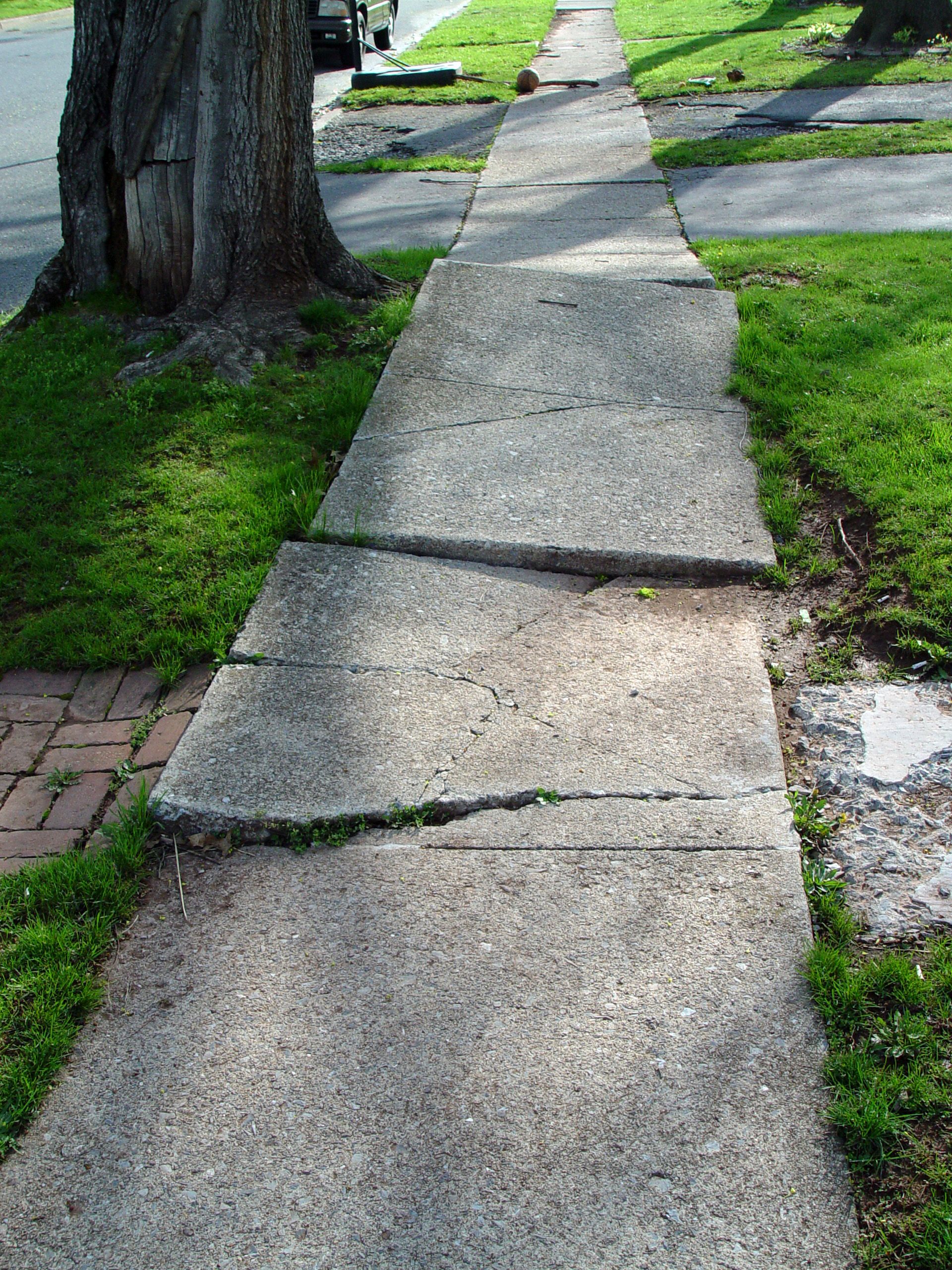
## Bike Lane
This is the next best solution since the road is smooth. That means you need to do very little dodging, balancing is super easy, and you can go faster. However, I wouldn't recommend even touching the bike lane until you've hit at least 50 miles on your board. If you fall, especially at 15+ mph, it'll hurt, and you've got cars surrounding you, which can end badly.
## Road
Just don't. The Onewheel moves at a pretty quick pace of 15 mph with no problem, but you don't want to be holding up traffic. Also, while the board has quite a bit of power, it doesn't just instantly accelerate. Unless you're already moving at a quick place, you can't just easily dodge out of the way of an oncoming vehicle.
# The Ride
When you're riding, there are a few things to keep in mind.
`1.` Safety, always
Always wear a helmet, and ideally wrist and knee guards. You will fall. You will want them.
`2.` Dogs
90% of dogs are not afraid of the Onewheel and they will be super curious about it. They will bark at you, and will lunge at you. Give the dogs a lot of space, and be prepared for it, otherwise you and/or the dog will end up hurting.
`3.` Cold wind
I bought the Onewheel in hopes of it being a full commuter vehicle. And it can be, but the cold sucks. As soon as it gets to about 35 degrees and below the wind on your face will hurt.<br />

`4.` Snow
That being said, it can handle light snow. Very light snow. If the road has just been plowed it'll handle it. It can also handle light powder. Deep snow though, 0.5 inch or more, and it won't do great. It's less to do with traction and more about how you lean to accelerate, which causes your Onewheel to turn into a shovel.
`5.` Soft Dirt
The beach. It's really cool being able to ride on the beach, but it's so much harder than riding on the pavement. The board will dig into the ground, which causes you to lean a lot more. It takes some time to get a good feeling under your feet to ride on it.
It can also be difficult to start moving because of the weight you're pushing down into one spot. If you can start on more solid ground; it'll be easier once you're going.
`6.` Good shoes
Tennis shoes suck on the Onewheel. I mean, they work alright, but Converse or skater shoes are better. Tennis shoes tend to have a lot of space inside, which means your feet slide around quite a bit. That's not fun when you're trying to guide the board and your foot has to slide an extra half an inch your shoe before making a difference. It just won't feel as tight of a ride.
`7.` Better socks
Get some awesome fluffy socks. When you're on the board for more than 15 minutes, your feet start to hurt. It's like standing and pushing your feet into a wooden floor. After a while, your heels will ache. The more padded your socks are the less that happens. Also, the more padded your socks, the tighter your shoes will fit, which means your feet will slide around less.
`8.` **Taking off**
*For beginners, pay special attention to this one. It's one of the most common ways to get injured when you're starting out.*
When you start accelerating, especially when you're in traffic, you might try accelerating too quickly. It took a while to get the hang of how quickly you can accelerate. If you try to take off too fast, you'll grind the nose of the board into the ground and you'll mostly likely go over the top of the board. Luckily, since you're just taking off, you'll be going slow and can probably catch yourself just fine. Though a lot of people gotten shoulder injuries or worse from these falls.
Best advice, take your time accelerating, especially as you're getting used to your board.
`9.` Tank
The Onewheel is a tank. It's been built to take a beating, and it's going to get dirty, it will get scratched up. You're not going to break it, so don't even bother trying to be gentle with the board.
# Maintenance
## The Cold and the Battery
If you're hoping to use this in the winter, don't leave it in the garage or your car. The battery needs to stay warm-ish, and the board can actually throw an error preventing it from starting up if it's too cold so that it can prevent any damage to you or the board. So keep it inside.
## Cleaning
Fairly easy. In the past I've hosed it down. The board is only water resistant though and there is no warranty coverage for water getting into the board. That means you can take it into the rain, but you shouldn't submerge it at all. Using a brush after the dirt has dried, using a light amount of water to scrub it, or using compressed air are nice alternatives. Though really, it'll be a lot of work to keep the board clean, and I rarely wash it. During normal use it won't get terribly dirty, but it'll always have something. It's part of the charm.
# Travel
`1.` 15 mph
Technically you can take the board up to 19+ mph hour, but realistically, you'll keep it at or under 15 mph. The board has a push back that happens when you hit 15 mph, which can be annoying, but is there to make sure you don't go so crazy fast that the motor can't handle it. You don't want to go flying off the board at 20 mph.
`2.` Hill Climbing
It can climb hills. Hill climbing is one of the magic moments with the board because it just feels like it shouldn't work and it handles it really well. However, you have to be a little careful because you have to lean forward to accelerate, which means dipping the nose into the hill. If you dip too much, you'll hit the hill, and probably come off.
`3.` Slight Slip
When I'm wearing my backpack, with my laptop and everything, I tend to weigh the board down. That causes an occasional slip in the motor. You'll feel it as you go, but the motor has enough power to correct itself. I've only had it take me off the board once, but it's something to be aware of.
# Eye Catching
When people first see it, they do a double take wondering how it works. The board itself actually looks like you could have built it yourself, which I've been asked a lot. It's probably beneficial because it doesn't look like it would cost as much as it does. That means it's slightly less likely that someone will try to steal it.
# Bike Lock
Which brings me to the bike lock. Most bike locks will work with the Onewheel so that you can leave it at a bike rack. You might want to bring the Onewheel with you when you buy one though, since then end of the lock will need to be fairly thin to fit through the wheel and the crossbar.
However, the board is small enough that you can carry it into coffee shops, which is what I usually do. I haven't had any complaints, and it usually fits under or to the side of a table with out getting in the way.
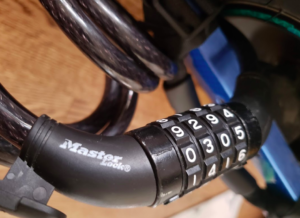
# Letting people try it
Eventually, someone will want to try it. When it happens, remember back to when you first tried it. They'll likely come off. Try to find a safe place to do it.
When you let them get on the board, walk with them as they move. Hold out your arm so that they can grab onto you if they need the balance. Otherwise, they can get hurt pretty quick. Whether that's a hard fall, or accidentally doing the splits.<br />
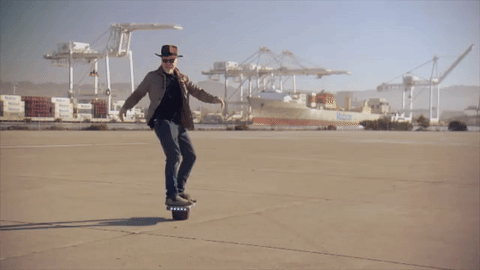
# Onewheel vs Electric Skateboard
The biggest difference is obviously the single wheel versus a more traditional 4 wheel skateboard. I've tried both, and you can't go wrong either way.
## Electric Skateboard
You can go faster and if you're already a skateboarder you'll be right at home but you'll also enjoy being able to actually brake. Plus it'll be way easier to go up hills.
## One Wheel
You can turn on a dime and go around corners with ease, but it's slower on a straight away. You can also go over almost any terrain as long as there's no more than a one inch height raise.
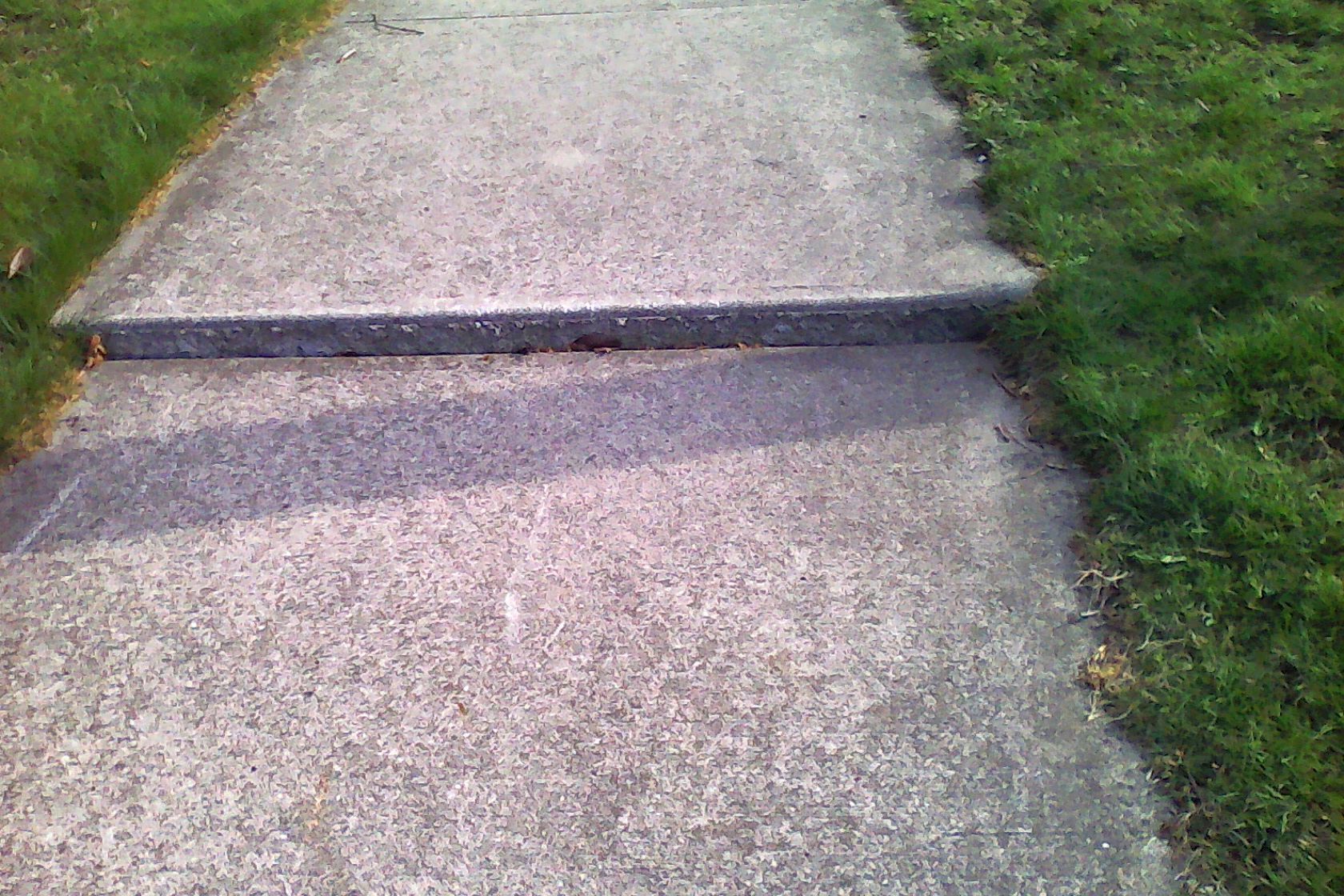
# My Ride
`1.` A solid 15 mile range
I tend to ride my board a little bit harder, but even so, I still get a solid 15 mile range. I'm only 2.5 miles to work, so I rarely go more than 8 miles in a day. Plenty of range.
`2.` 1 degree tilt up
Recently an update was pushed out that allows you to customize how the board rides. I keep my board tight, but I also tip the board up 1 degree. I have to go up hill to get home, and the 1 degree tilt up really helps when climbing so that I don't drive the nose into the hill.
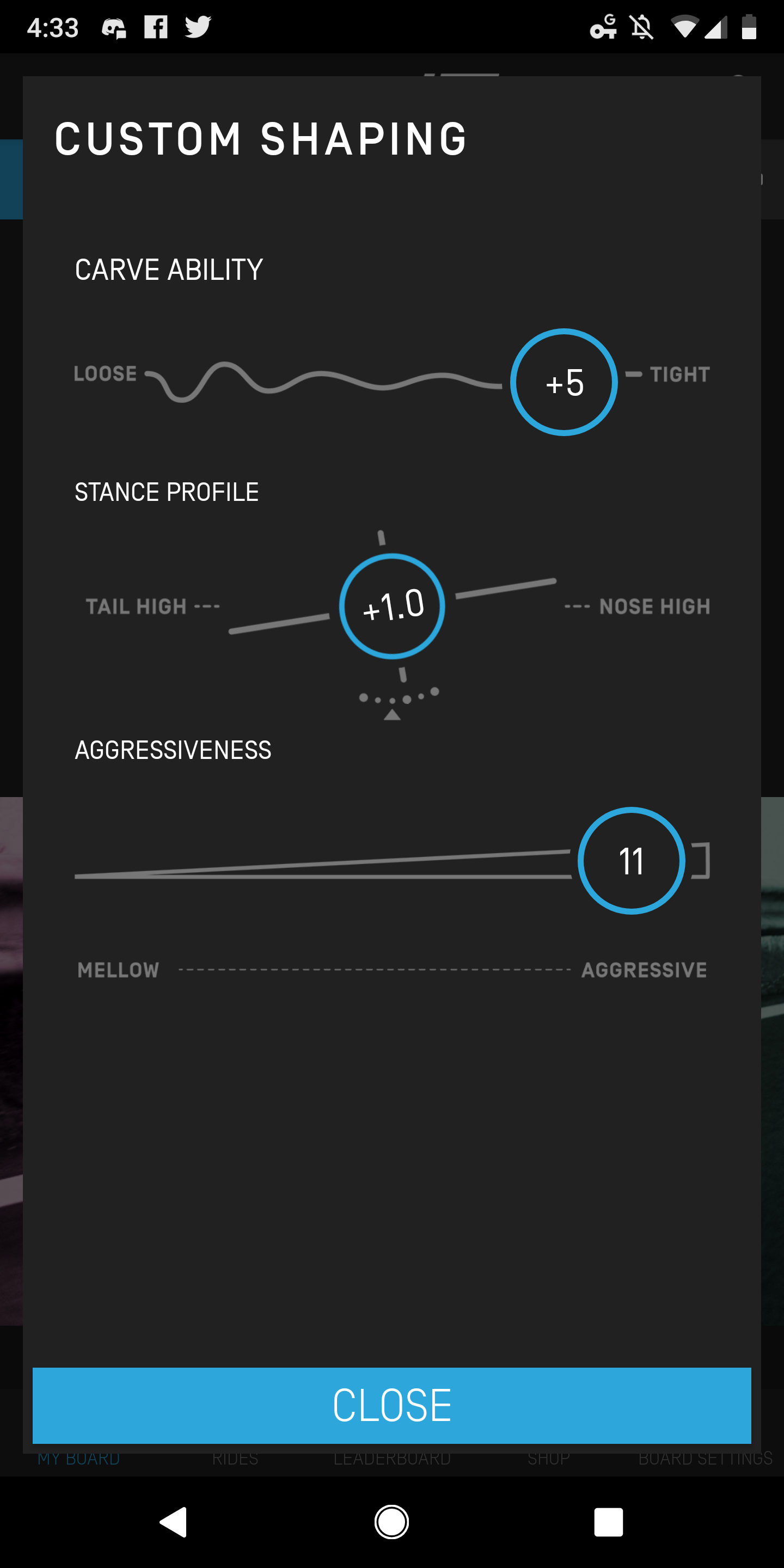
`3.` Mountain bike trail
This is a blast and the Onewheel crushes it. Until you get to an area that's meant for a bike tire, then you might have to get off, pick it up, pull it to the other side, and then keep going. It's an absolute blast though and the board has plenty of torque to handle it.
`4.` The fender
You'll want the additional fender. It'll keep your pants dry, and out of the wheel. It does sound a little funny at first when you run over gravel or something though because it'll bounce around between the plastic and the wheel making an almost baby rattle type of noise. Don't be alarmed by it, it's harmless and won't cause any issues.
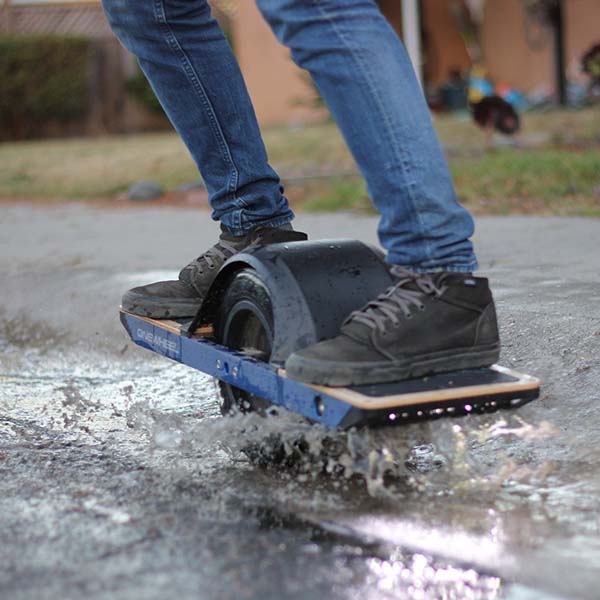
# Legalities
You'll want to check with your local laws on riding an e-board. There can be some stipulations on if/where/when you can ride.
I live in Michigan, where the laws are pretty easy to abide: [https://www.reddit.com/r/ElectricSkateboarding/comments/8skw2b/eboards_are_now_legal_in_michigan/](https://www.reddit.com/r/ElectricSkateboarding/comments/8skw2b/eboards_are_now_legal_in_michigan/)
# So can it replace my car?
Yes... but it might get cold. Luckily for me, my wife and I can share a car. So when we need to go long distances, or if it's crazy cold out, we have a car for that. I could just as easily take an Uber/Lyft if I needed to though.
That being said, we're down to 1 car and for just myself, I pay no gas, no car insurance, and I've had no maintenance so far. I'm easily saving $100 per month by not having a car of my own. That alone will pay for the board all while having a way more fun trip into work.